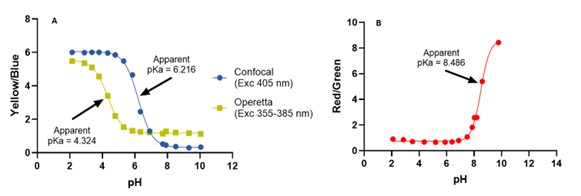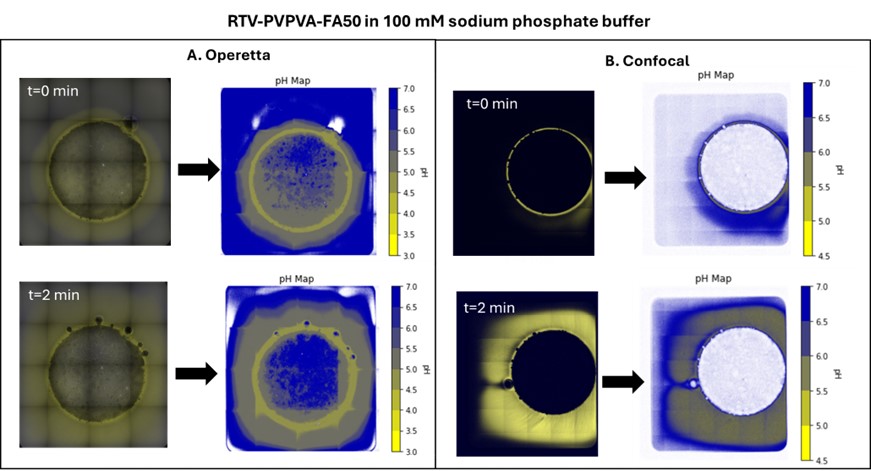Formulation and Delivery - Chemical
(M1130-09-60) Development of a Quantitative Method for Formulation Microenvironmental pH Assessment

Niloufar Salehi, Ph.D.
Advisor
Eli Lilly and Company
Indianapolis, Indiana, United States- MR
Mariana Romero-Gonzalez, MS
Graduate Student
University of Michigan
Indianapolis, IN 46202-4051, Indiana, United States - MR
Mariana Romero-Gonzalez, MS
Graduate Student
University of Michigan
Indianapolis, IN 46202-4051, Indiana, United States - RV
Robert D Van Horn, BS
Senior Advisor
Eli Lilly and Company
Indianapolis, IN 46202-4051, Indiana, United States - YL
Youlin Liu, Ph.D.
Asvisor
Eli Lilly and Company
Indianapolis, IN 46202-4051, Indiana, United States - SJ
Suela Jonuzaj, Ph.D.
Asvisor
Eli Lilly and Company
Indianapolis, IN 46202-4051, Indiana, United States - JH
Jeff Hanson, Ph.D.
Asvisor
Eli Lilly and Company
Indianapolis, IN 46202-4051, Indiana, United States 
David C. Sperry, Ph.D.
Executive Director
Eli Lilly and Company
Indianapolis, IN, Indiana, United States
Presenting Author(s)
Main Author(s)
Co-Author(s)
Methods: The proposed method integrates dual-emission pH-sensitive fluorescent dyes—SNARF-5F and LysoSensor Yellow/Blue DND-160—with confocal laser scanning microscopy to generate spatially resolved pH maps of dissolving compacts. These dyes cover a broad pH range and enable ratiometric imaging, which compensates for dye concentration and photobleaching, enhancing accuracy and reproducibility. Amorphous solid dispersions (ASDs) of ritonavir (a weak base) and calcium atorvastatin (a weak acid salt) were prepared using poly(vinylpyrrolidone-co-vinyl acetate) (PVPVA) as a polymer carrier. Formulations were developed with and without pH modifiers (e.g., fumaric acid, sodium bicarbonate, sodium carbonate) and characterized using XRPD, SEM, and UV-Vis spectroscopy. Calibration curves for both dyes were generated using buffer systems across pH 2–10. Imaging was conducted using Zeiss LSM 880 and Operetta CLS systems, with pH maps computed via Python-based image analysis. The method was validated against slurry pH and microsensor probe measurements.
Results: Key findings include: 1) The Operetta system provided more sensitive and accurate pH mapping than the Zeiss microscope, particularly for boundary layer gradients. 2) Ritonavir formulations with fumaric acid showed interfacial pH value of 4.5–5.0 (Operetta) aligning with microsensor data. 3) Calcium atorvastatin formulations with sodium carbonate exhibited boundary layer pH up to 8.5, with evidence of liquid-liquid phase separation (LLPS) at higher modifier levels. 4) Slurry pH measurements significantly underestimated interfacial pH, highlighting the limitations of bulk methods.
Conclusion: This method offers a dynamic, spatially resolved view of pH evolution during dissolution, enabling better prediction of drug performance and stability. It is particularly valuable for optimizing formulations of weakly ionizable drugs and understanding the role of excipients in modulating local pH. Future work may extend this approach to 3D imaging and gastric-relevant conditions.
References: Badawy, S., & Hussain, M. (2007). Microenvironmental pH Modulation in Solid Dosage Forms. Journal of Pharmaceutical Sciences, 96(5), 948–959.
Yang, M., et al. (2014). Microenvironmental pH-modified solid dispersions to enhance dissolution and bioavailability. International Journal of Pharmaceutics, 475(1), 97–109.
Bapat, P., et al. (2024). Exploring biorelevant conditions and release profiles of ritonavir from HPMCAS-based amorphous solid dispersions, Pharmaceutics, Drug Delivery and Pharmaceutical Technology, vol. 114, no. 1, pp. 185–198.
Salehi, N., et al. (2021). Improving Dissolution Behavior and Oral Absorption of Drugs with pH-Dependent Solubility. Molecular Pharmaceutics, 18(9), 3326–3341.
Acknowledgements: This report represents the scientific views of the authors and not necessarily Eli Lilly & Company.
 Figure 1. Calibration curves for: A) LysoSensor Yellow/Blue DND-160 showing the relationship between pH and blue-to-yellow fluorescence intensity ratio, Zeiss confocal microscope (Yellow Emission: 499-517 nm; Blue Emission: 418-491 nm) and the Operetta (Yellow Emission: 500-550 nm; Blue Emission: 430-500 nm) , B) SNARF-5F dye showing the relationship between pH and the red-to-green fluorescence intensity ratio (Red Emission: 629-670 nm; Green Emission: 561-597 nm.
Figure 1. Calibration curves for: A) LysoSensor Yellow/Blue DND-160 showing the relationship between pH and blue-to-yellow fluorescence intensity ratio, Zeiss confocal microscope (Yellow Emission: 499-517 nm; Blue Emission: 418-491 nm) and the Operetta (Yellow Emission: 500-550 nm; Blue Emission: 430-500 nm) , B) SNARF-5F dye showing the relationship between pH and the red-to-green fluorescence intensity ratio (Red Emission: 629-670 nm; Green Emission: 561-597 nm. Figure 2. Interfacial and boundary layer pH mapping at initial compact submerging (t = 0 min) and two minutes after submerging (t = 2 min) using LysoSensor Yellow-Blue DND-160, comparison between A) Operetta imaging system and B) Zeiss microscope. A) At both time points, pH maps generated using the Operetta files and calibration revealed an interfacial pH of 4.5-5.0 and a boundary layer pH of 5.0-5.5 in the area closer to the solid compact, and the pH increased to 5.5-6.0 and then to 6.5-7.0 as the radius from the center of the compact increased. This decreased pH radius increased from 0 to 2 minutes. B) In the case of the maps from the Zeiss images, the pH at the interface at time = 0 minutes, was estimated to be 5.5-6.0, with no change of pH observed on the boundary layer. After 2 minutes, the boundary layer radius had increased considerably, and both the interface and the boundary layer were mapped as a pH of 5.5-6.0.
Figure 2. Interfacial and boundary layer pH mapping at initial compact submerging (t = 0 min) and two minutes after submerging (t = 2 min) using LysoSensor Yellow-Blue DND-160, comparison between A) Operetta imaging system and B) Zeiss microscope. A) At both time points, pH maps generated using the Operetta files and calibration revealed an interfacial pH of 4.5-5.0 and a boundary layer pH of 5.0-5.5 in the area closer to the solid compact, and the pH increased to 5.5-6.0 and then to 6.5-7.0 as the radius from the center of the compact increased. This decreased pH radius increased from 0 to 2 minutes. B) In the case of the maps from the Zeiss images, the pH at the interface at time = 0 minutes, was estimated to be 5.5-6.0, with no change of pH observed on the boundary layer. After 2 minutes, the boundary layer radius had increased considerably, and both the interface and the boundary layer were mapped as a pH of 5.5-6.0.